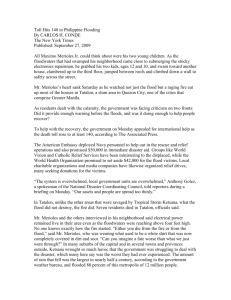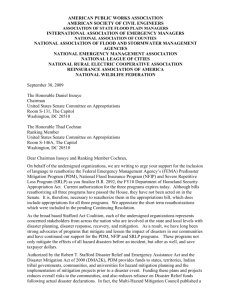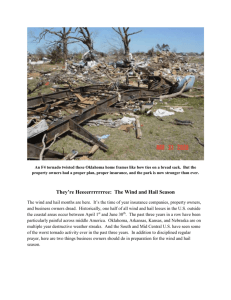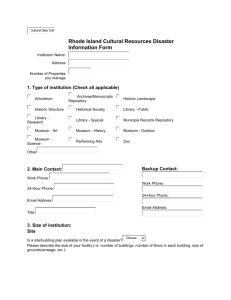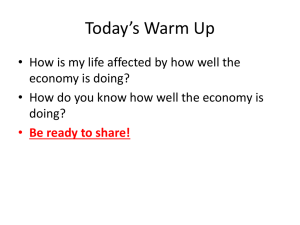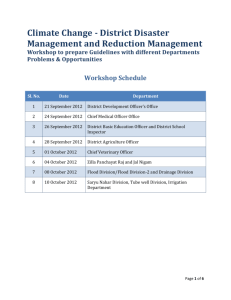Centre for Risk and Community Safety
advertisement
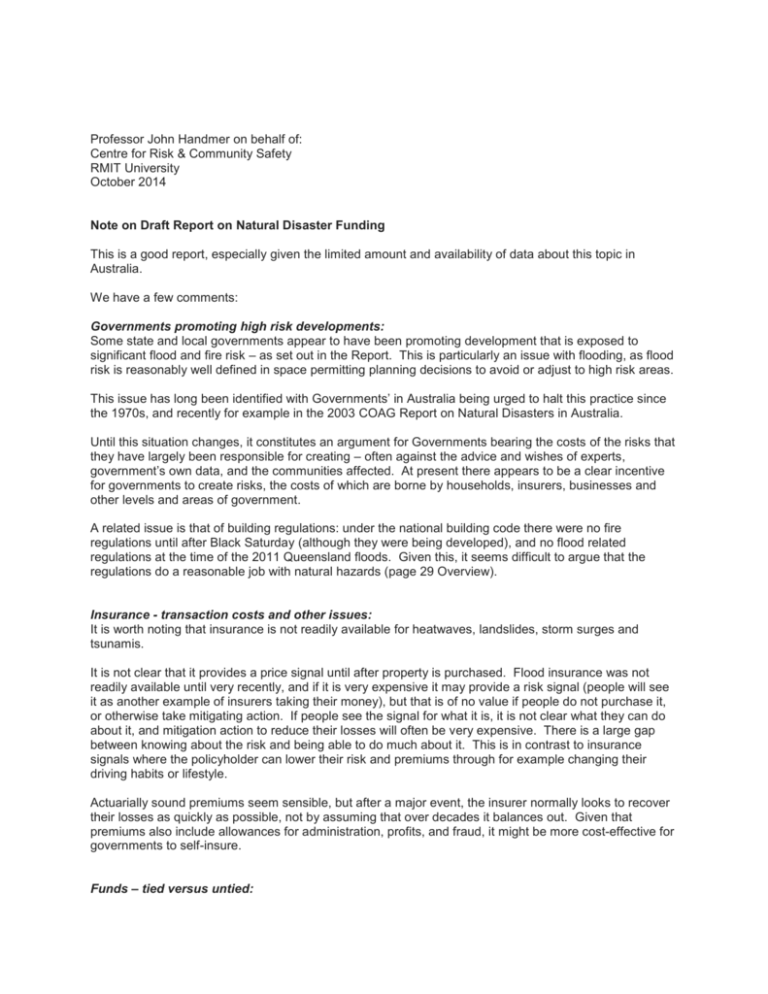
Professor John Handmer on behalf of: Centre for Risk & Community Safety RMIT University October 2014 Note on Draft Report on Natural Disaster Funding This is a good report, especially given the limited amount and availability of data about this topic in Australia. We have a few comments: Governments promoting high risk developments: Some state and local governments appear to have been promoting development that is exposed to significant flood and fire risk – as set out in the Report. This is particularly an issue with flooding, as flood risk is reasonably well defined in space permitting planning decisions to avoid or adjust to high risk areas. This issue has long been identified with Governments’ in Australia being urged to halt this practice since the 1970s, and recently for example in the 2003 COAG Report on Natural Disasters in Australia. Until this situation changes, it constitutes an argument for Governments bearing the costs of the risks that they have largely been responsible for creating – often against the advice and wishes of experts, government’s own data, and the communities affected. At present there appears to be a clear incentive for governments to create risks, the costs of which are borne by households, insurers, businesses and other levels and areas of government. A related issue is that of building regulations: under the national building code there were no fire regulations until after Black Saturday (although they were being developed), and no flood related regulations at the time of the 2011 Queensland floods. Given this, it seems difficult to argue that the regulations do a reasonable job with natural hazards (page 29 Overview). Insurance - transaction costs and other issues: It is worth noting that insurance is not readily available for heatwaves, landslides, storm surges and tsunamis. It is not clear that it provides a price signal until after property is purchased. Flood insurance was not readily available until very recently, and if it is very expensive it may provide a risk signal (people will see it as another example of insurers taking their money), but that is of no value if people do not purchase it, or otherwise take mitigating action. If people see the signal for what it is, it is not clear what they can do about it, and mitigation action to reduce their losses will often be very expensive. There is a large gap between knowing about the risk and being able to do much about it. This is in contrast to insurance signals where the policyholder can lower their risk and premiums through for example changing their driving habits or lifestyle. Actuarially sound premiums seem sensible, but after a major event, the insurer normally looks to recover their losses as quickly as possible, not by assuming that over decades it balances out. Given that premiums also include allowances for administration, profits, and fraud, it might be more cost-effective for governments to self-insure. Funds – tied versus untied: Tied funding or disaster relief helps ensure that money provided by Australian taxpayers for disaster relief is used for that purpose, rather than for general revenue support. Creating incentives to invest in mitigation would be sensible, but will take much more than simply untying funding. The key factor working against more mitigation is the rapidly expanding exposure and as documented by the Commission, governments show no interest in limiting that trend. Another factor is the political attractiveness of disaster relief versus the rather low-profile process of disaster prevention. Post-impact payments to households and businesses: There is limited evidence that households, or small businesses fully understand their personal risk, and it is difficult to see how they could given that so much information is effectively treated as secret. For both floods and fires, people can be located in very low risk areas which are then affected by natural phenomena, for example, some areas impacted by the Black Saturday fires, and research results from the USA that about half the flood losses to households occur outside the designated mapped flood risk areas (1:100 flood zone). Despite the apparently very generous nature of the post-disaster payments to individuals/households, some people and households miss out even though they appear to be very vulnerable and in need of support. Arguably the single most important factor in post-disaster recovery for communities (and households) is local economic vitality, providing livelihoods and generating the funds needed for recovery. This is an important reason for investing in businesses after impact. The evidence for effectiveness of such interventions is mixed, but care is needed when making assessments. The US scheme mentioned by the Commission is characterised by immense bureaucratic complexity which may be a major issue for small firms and complicates assessments of the effectiveness of payments. Certainly, the psychological impact appears to be very positive en business confidence, which may be a more important factor than the size of the payments. A needs basis? The Draft Report appears to advocate use of a needs approach, rather than a rights approach which partly characterizes the current approach in Australia. The Commission appears to suggest that post disaster payments should go to those in serious need of support, those who are “vulnerable”. But it also seems that those who do little about managing their own risk would not receive support. It might help if the Commission clarified what approach they advocate. Information: The Commission sees that information on hazards has improved recently. However, our experience is that, apart from commercial datasets, good data remains in short supply, and the Commission was unable to obtain detailed information on the question of government disaster related payments – the question it is investigating. This has significant implications for the Commission’s recommendations.



